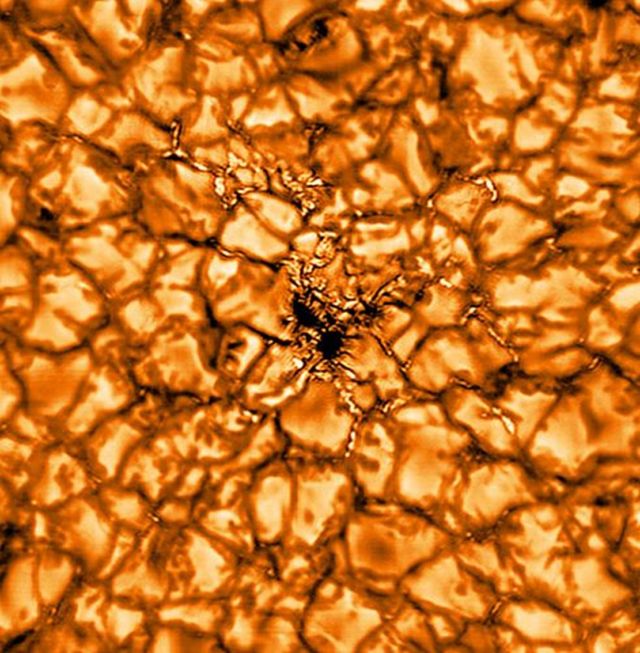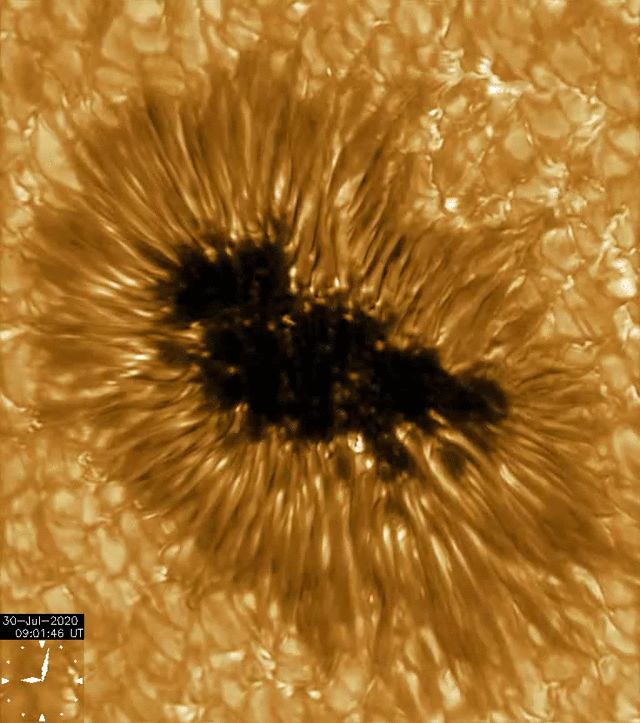Europe’s largest Solar Telescope GREGOR unveils stunning magnetic details of the Sun.
GREGOR, the largest solar telescope in Europe, which is operated by a German consortium and located on Teide Observatory, Spain, has obtained unprecedented images of the fine-structure of the Sun. Following a major redesign of GREGOR’s optics, carried out by a team of scientists and engineers from the Leibniz Institute for Solar Physics (KIS), the Sun can be observed at a higher resolution than before from Europe.
The Sun is our star and has a profound influence on our planet, life, and civilization. By studying the magnetism on the Sun, we can understand its influence on Earth and minimize damage of satellites and technological infrastructure. The GREGOR telescope allows scientists to resolve details as small as 50 km on the Sun, which is a tiny fraction of the solar diameter of 1.4 million km. This is as if one saw a needle on a soccer field perfectly sharp from a distance of one kilometer.

<small|>Solar magnetic fields in very high resolution. The image was taken at the wavelength of 516 nm. Credit: KIS
“This was a very exciting, but also extremely challenging project. In only one year we completely redesigned the optics, mechanics, and electronics to achieve the best possible image quality.” said Dr. Lucia Kleint, who led the project and the German solar telescopes on Tenerife. A major technical breakthrough was achieved by the project team in March this year, during the lockdown, when they were stranded at the observatory and set up the optical laboratory from the ground up. Unfortunately, snow storms prevented solar observations. When Spain reopened in July, the team immediately flew back and obtained the highest resolution images of the Sun ever taken by a European telescope.
Prof. Dr. Svetlana Berdyugina, professor at the Albert-Ludwig University of Freiburg and Director of the Leibniz Institute for Solar Physics (KIS), is very happy about the outstanding results: “The project was rather risky because such telescope upgrades usually take years, but the great team work and meticulous planning have led to this success. Now we have a powerful instrument to solve puzzles on the Sun.” The new optics of the telescope will allow scientists to study magnetic fields, convection, turbulence, solar eruptions, and sunspots in great detail. First light images obtained in July 2020 reveal astonishing details of sunspot evolution and intricate structures in solar plasma.
Top image: A sunspot observed in high resolution by the GREGOR telescope at the wavelength 430 nm. Credit: KIS
source Leibniz






Leave A Comment